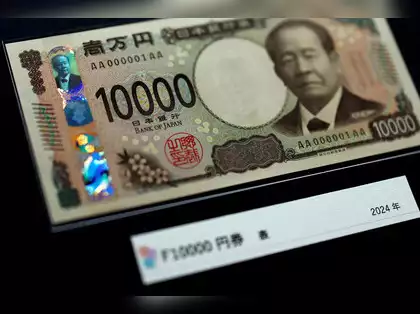
Swiss franc and safe-haven yen rise as Trump’s tariffs hurt the dollar
U.S. President Donald Trump imposed global tariffs on Monday, which caused investors to sell the dollar and flood into safe havens like the Swiss franc and yen.
The market meltdown that destroyed about $6 trillion in value from U.S. stocks last week due to growing concerns about a worldwide recession, especially in the United States, did not spare pro-growth currencies like the Australian and New Zealand dollars.
After plunging to a five-year bottom earlier in the day, the Australian dollar was down 0.73% at $0.6001, and the kiwi fell 0.75% to $0.5554.
Over fifty countries have contacted the White House to initiate trade negotiations, and China declared on Saturday that “the market has spoken” by opposing Trump’s tariffs.
China retaliated Friday with a list of countermeasures, including export restrictions on certain rare earths and additional 34% tariffs on all U.S. exports.
The dollar continued its nearly 2% decline against the Japanese currency last week, lagging close to a six-month low and down 1.3% against the yen at 144.95 in tumultuous early trading on Monday.
Last week, the Swiss franc climbed 2.3% against the US dollar, and it now jumps more than 1% to 0.85095 per dollar.
Trump’s most recent tariff attack has resulted in notable gains for the two safe-haven currencies. Safety bids have also increased the value of assets like gold and government bonds.
“Selling USD/JPY has been the main theme because it’s a good proxy for the U.S. recession and yields, and U.S. yields tanked,” stated Brent Donnelly, president of market maker and analytics business Spectra Markets.
The dollar is also commonly regarded as a safe haven asset, but as tariff uncertainty and worries about how it may affect U.S. economy mount, that reputation appears to be weakening.
In Asia, the euro increased by 0.26% to $1.0994, while pound fell by 0.13% to $1.2889.
The dollar dropped more than 0.4% to 102.48 against a basket of currencies after plunging 1% the previous week.
“The USD has been suffering from outflows” as investors “look… to diversify away from U.S. assets,” according to Rodrigo Catril, senior FX analyst at National Australia Bank, who noted that the U.S. is at the core of the trade war.
This year, traders have increased their bets on additional rate cuts from the Federal Reserve, based on the belief that policymakers would need to ease more aggressively to support growth in the largest economy in the world.
Futures indicate that rate reduction of 100 basis points are priced in by December of this year, but Fed Chair Jerome Powell warned on Friday that it was still too early to determine what the central bank should do.
On Monday, Asia will also be watching China’s central bank’s yuan midpoint fixing for hints about whether Beijing might withstand a depreciating currency as Sino-US trade tensions intensify. On Friday, Chinese markets were closed in observance of a holiday.
Ahead of the onshore counterpart’s opening of trade, the offshore yuan was last slightly altered at 7.2861 to the dollar.
All Categories
Recent Posts
Tags
+13162306000
zoneyetu@yahoo.com



